Vinyl chloride
Fishkill Village
Vinyl chloride is a known human carcinogen used for production of polyvinyl chloride (PVC) plastics. Discharges from plastics manufacturing can contaminate drinking water with vinyl chloride. Read More.
Exposure to vinyl chloride increases the risk of cancer and can damage the liver and nervous system. The California public health goal of 0.05 parts per billion, set to protect against cancer, is 40 times lower than the amount allowed by the federal government, which is a Maximum Contaminant Level of 2 parts per billion.
Plastic pipes made of polyvinyl chloride (PVC) and chlorinated PVC (CPVC) are widely used for drinking water distribution lines and internal plumbing, raising concern about vinyl chloride contamination of drinking water. A study published in 2011 by Ryan Walter of Cornell University School of Civil and Environmental Engineering suggested that small amounts of vinyl chloride can leach from PVC pipes. Vinyl chloride can also form in the pipes as a result of water disinfection with chlorine.
In an assessment completed in 2000, California Office of Environmental Health Hazard Assessment stated that drinking water is not a significant source of exposure to vinyl chloride for the general population.
Samples
Samples exceeding legal limit (MCL)
Samples exceeding
health guidelines
Testing results - average by year
| Year | Average result | Samples taken | Detections | Range of results |
|---|---|---|---|---|
| 2014 | ND | 8 | 0 | ND |
| 2015 | ND | 8 | 0 | ND |
| 2016 | ND | 8 | 0 | ND |
| 2017 | ND | 20 | 0 | ND |
| 2018 | ND | 8 | 0 | ND |
| 2019 | ND | 8 | 0 | ND |
ppb = parts per billion
State and national drinking water standards and health guidelines
EWG Health Guideline 0.05 ppb
The EWG Health Guideline of 0.05 ppb for vinyl chloride was defined by the California Office of Environmental Health Hazard Assessment as a public health goal, the level of a drinking water contaminant that does not pose a significant health risk. This health guideline protects against cancer.
EPA Maximum Contaminant
Level (MCL) 2 ppb
The legal limit for vinyl chloride, established in 1987, was based on analytical detection limits at the time that the standard was set. This limit may not fully protect against the risk of cancer due to vinyl chloride exposure.
ppb = parts per billion
All test results
| Date | Lab ID | Result |
|---|---|---|
| 2014-05-07 | FK14673-80D | ND |
| 2014-05-07 | FK14673-80 | ND |
| 2014-05-07 | FK14673-80E | ND |
| 2014-05-07 | FK14673-80F | ND |
| 2014-05-07 | FK14673-80B | ND |
| 2014-05-07 | FK14673-80G | ND |
| 2014-05-07 | FK14673-80H | ND |
| 2014-05-07 | FK14673-80A | ND |
| 2015-10-14 | FK152038 | ND |
| 2015-10-14 | FK152036 | ND |
| 2015-10-14 | FK152033 | ND |
| 2015-10-14 | FK152035 | ND |
| 2015-10-14 | FK152032 | ND |
| 2015-10-14 | FK152034 | ND |
| 2015-10-14 | FK152037 | ND |
| 2015-11-11 | FK152199 | ND |
| 2016-11-02 | FK163979 | ND |
| 2016-11-02 | FK163975 | ND |
| 2016-11-02 | FK163978 | ND |
| 2016-11-02 | FK163977 | ND |
| 2016-11-02 | FK163981 | ND |
| 2016-11-02 | FK163974 | ND |
| 2016-11-02 | FK163980 | ND |
| 2016-11-02 | FK163976 | ND |
| 2017-02-01 | VF170280 | ND |
| 2017-02-01 | VF170279 | ND |
| 2017-11-15 | FK172884 | ND |
| 2017-11-15 | FK172883 | ND |
| 2017-11-15 | FK172885 | ND |
| 2017-11-15 | FK172881 | ND |
| 2017-11-15 | FK172887 | ND |
| 2017-11-15 | FK172888 | ND |
| 2017-11-15 | FK172882 | ND |
| 2017-11-15 | FK172886 | ND |
| 2017-12-06 | L1744911-05 | ND |
| 2017-12-06 | L1744911-04 | ND |
| 2017-12-06 | L1744911-03 | ND |
| 2017-12-06 | L1744911-06 | ND |
| 2017-12-06 | L1744911-08 | ND |
| 2017-12-06 | L1744911-07 | ND |
| 2017-12-06 | L1744911-10 | ND |
| 2017-12-06 | L1744911-01 | ND |
| 2017-12-06 | L1744911-09 | ND |
| 2017-12-06 | L1744911-02 | ND |
| 2018-12-12 | VF132891 | ND |
| 2018-12-12 | VF132889 | ND |
| 2018-12-12 | VF132886 | ND |
| 2018-12-12 | VF132884 | ND |
| 2018-12-12 | VF132885 | ND |
| 2018-12-12 | VF132887 | ND |
| 2018-12-12 | VF132888 | ND |
| 2018-12-12 | VF132890 | ND |
| 2019-11-20 | 19K0869-06 | ND |
| 2019-11-20 | 19K0869-05 | ND |
| 2019-11-20 | 19K0869-08 | ND |
| 2019-11-20 | 19K0869-01 | ND |
| 2019-11-20 | 19K0869-03 | ND |
| 2019-11-20 | 19K0869-07 | ND |
| 2019-11-20 | 19K0869-04 | ND |
| 2019-11-20 | 19K0869-02 | ND |
